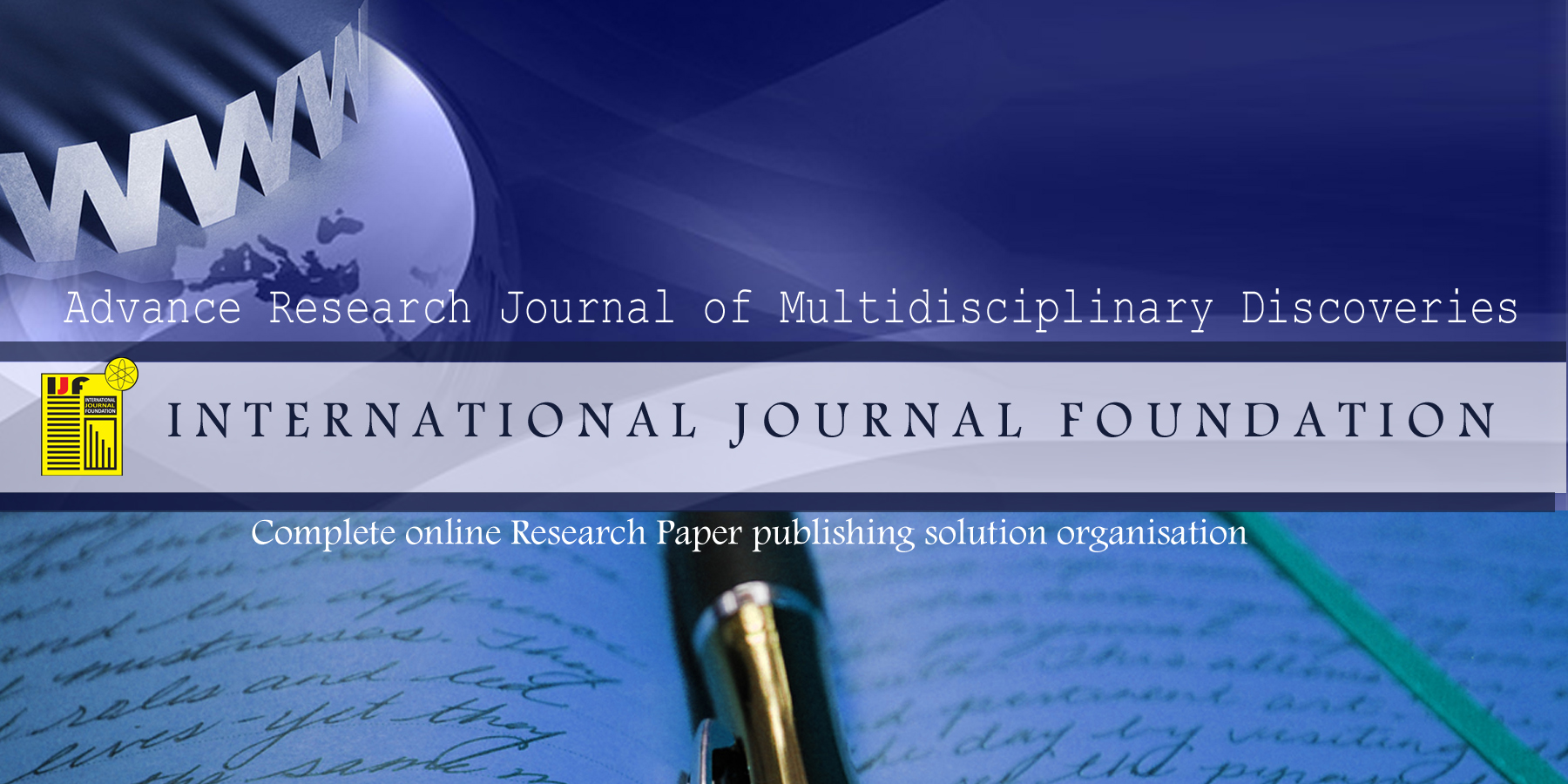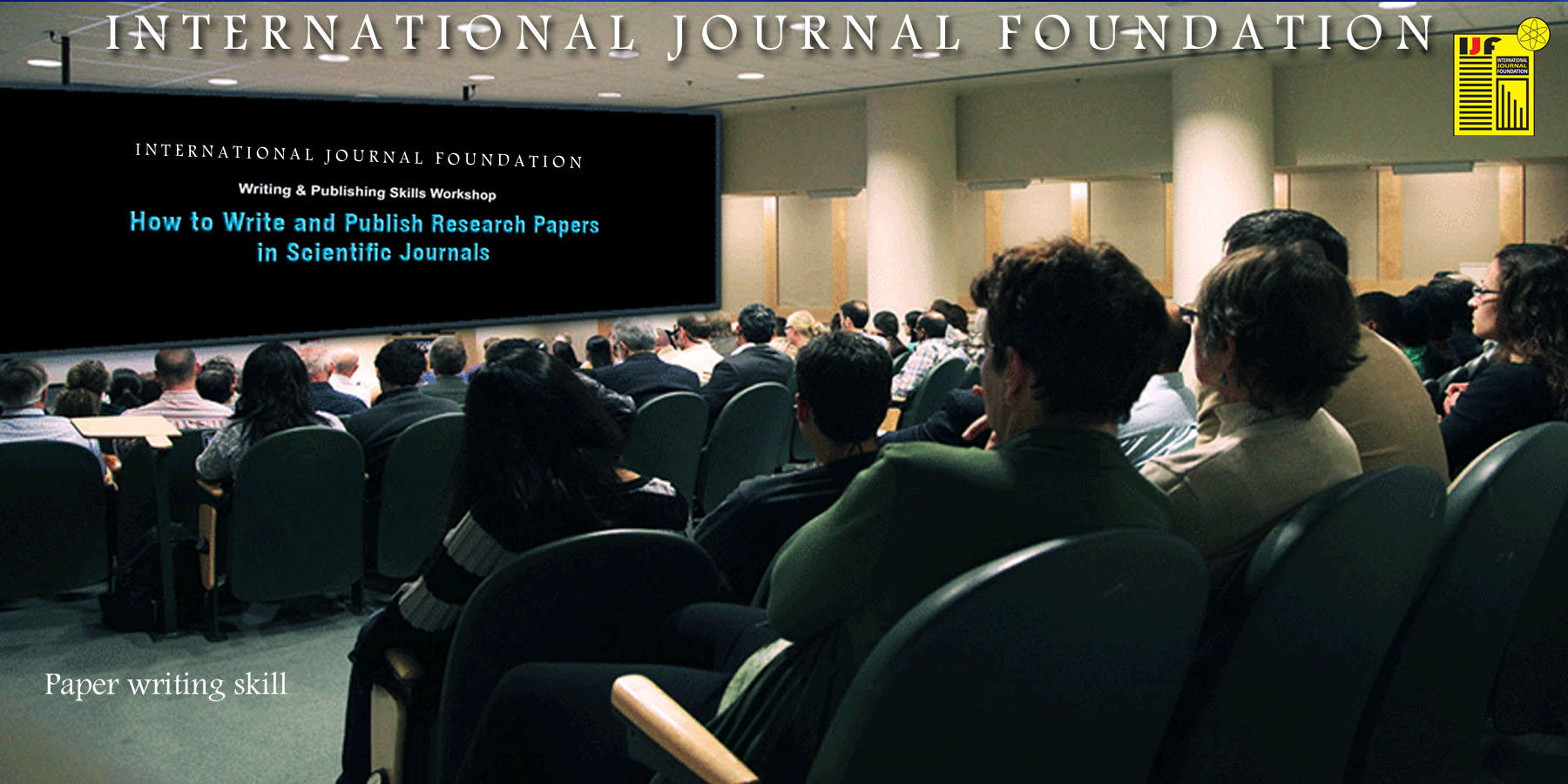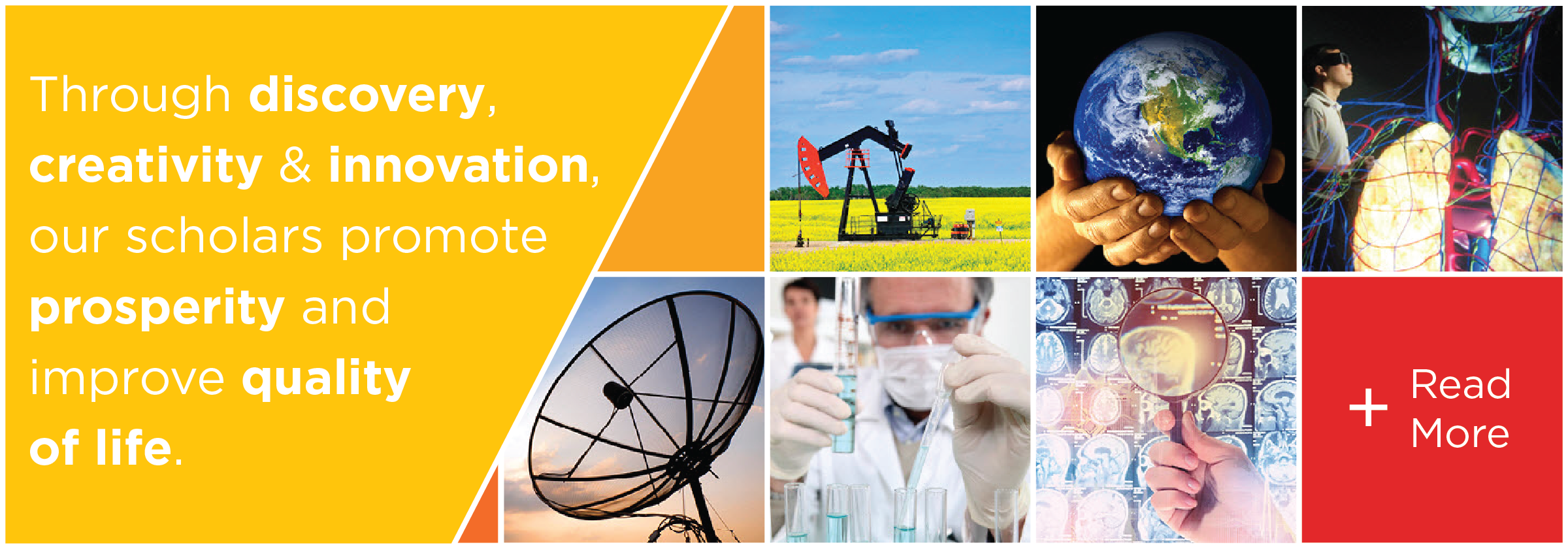2019
OCTOBER 2019/ Vol.42.0/ Issue-I
CATEGORY : Research Topic on English Language & Teaching [ Original Research Article ]
| SL.No. | Detailed information of the published article |
| 1 | Manuscript Title : ESL through the lenses of EFL: Constructing the experiences of ESL Students in an EFL Program. Author’s Name : Hamissou Ousseini Article Type : ORIGINAL RESEARCH ARTICLE Country from : NIGER Date of Publication: 20-11-2019 Journal Name : Advance Research Journal of Multidisciplinary Discoveries [ ISSN : 2456-1045 ] Article Identification : Vol. 42.0/Issue-I/Chapter-I/Page – 01-07 [OCTOBER-2019 EDITION ] Article Code : ELT-V42-I1-C1-OCT2019 Status : Officially published Publisher : International Journal Foundation Download PDF : Full article (Pdf) —————————————————————————————————————————– ABSTRACT: This is empirical research which draws on the Kachruvian perspectives to provides insights on reasons that bring citizens of outer circle countries to an expanding circle country to learn English. Data were collected using unstructured interviews from eight citizens of Nigeria, Ghana and Gambia studying English in a Nigerien university. click here Findings suggest that most of the participants embraced English studies out of constraint, mainly due to the lack of proficiency in French. Their majority moved to Niger due to family reasons but could not undertake studies in their preferred subjects because courses are taught in French. Participants also reported difficulties they experienced as part of their journey within the English language program. KEYWORDS : English a second/foreign language, world Englishes, Kachruvian concentric circles.

|
CATEGORY : Research Topic on Architect [ Case Study ]
| SL.No. | Detailed information of the published article |
| 2 | Manuscript Title : Genius Loci (Sense of place) in sacred places : A case study of La Sagrada Familia Author’s Name : Fatemeh Monzavi, Dr. Kağan Günçe Article Type : ORIGINAL RESEARCH ARTICLE Country from : TURKEY Date of Publication: 20-11-2019 Journal Name : Advance Research Journal of Multidisciplinary Discoveries [ ISSN : 2456-1045 ] Article Identification : Vol. 42.0/Issue-I/Chapter-II/Page – 08-13 [OCTOBER-2019 EDITION ] Article Code : ARCH-V42-I1-C2-OCT2019 Status : Officially published Publisher : International Journal Foundation Download: Full article (Pdf) —————————————————————————————————————————– ABSTRACT : This article aims to identify and extend understanding on the space perception of interior architecture space and form. Increasing the concern about the importance of the feeling about space, form and collaboration between interior architectural design and human senses. Positive influences of interior design of religious spaces effect on people’s perception and emotional senses. It will study spatial impressions, with special purpose to demonstrate and illuminate the importance of religious interior space insight. It will emphasis on the environment and simulations of spaces for religious experience.click here The research objective is the relationship between religious interior design and genius loci, which has been shown to have strong psychological impacts on human’s sense and perception. Moreover, experience and feelings have a significant role in perception of effective interior architectural design. Understanding forms in space for making a balance between the religious activities and space perception, reaching harmony with the surrounding atmosphere, sense of place or Genius Loci and integrating with spirituality are crucial in this essay.Research method of this reading is kind of qualitative, descriptive and data gathering method based on documented study. It is deductive and analyzing the case study according color and lighting perception and sense of place of the La Sagrada Familia, in Spain, which is one of the most exceptional and significant sample of the religious places in the world. Finding and result of this article is features and impact of light, color, visual forms of religious areas which create positive distraction from real life difficulties.KEYWORDS :Space Perception, genius loci (Sense of Place), Religious Architecture, Lighting, Color.

|
CATEGORY : Research Topic on Medical Science [ Original Research Article ]
| SL.No. | Detailed information of the published article |
| 3 | Manuscript Title : Youth river cadres as an efforts to improve clean and healthy behavior in the floating market environment. Author’s Name : * Sari, Ayu Riana1; *Rahman, Fauzie2; Arifin, Syamsul3; Laily, Nur4; Anhar, Vina Yulia5; Rosadi, Dian6; Yulidasari Fahrini7; Rahayu, Atikah8; Anggraini, Lia9; Noor, Meitria Syahadatina10; Putri, Andini Octaviana11; Hermawan, Deddy12; Fitriyani, Jayanti13; Afifah, Noor, Laila14; Helmina Rada15; Izah, Nurul16; Anwar, Amalia Rahmawati17; Destriani, Nuzulia Bella18; Hadianor19 Article Type : ORIGINAL RESEARCH ARTICLE Country from : INDONESIA Date of Publication: 20-11-2019 Journal Name : Advance Research Journal of Multidisciplinary Discoveries [ ISSN : 2456-1045 ] Article Identification : Vol. 42.0/Issue-I/Chapter-III/Page – 14-18 [OCTOBER-2019 EDITION ] Article Code : MDS-V42-I1-C3-OCT2019 Status : Officially published Publisher : International Journal Foundation Download: Full article (Pdf) —————————————————————————————————————————– Abstract : People who live on the banks of the Martapura River have diverse habits in managing daily rubbish, such as dumping garbage into Temporary Trash Disposal (TPSS), being burned, or discharged into rivers, because some Large communities still choose to throw trash into the river. The establishment of the independence of young people to be respected and protected by the environmental sustainability of the river. This research using operational research methods. click here The study began with the formulation of an innovative and creative experiment by the concept of the YORICA (Youth River Cadres) program. The implementation of the YORICA program consists of 5 activities namely Socialization and Discussion (Lidi), film screenings and action, fierce gymnastics (movement and brain training), waste recycling program, and Jali program (protecting the environment).The implementation of socialization and discussion activities (sticks) showed an increase in the knowledge of the cadres in the amount of 21 people (70%). There was a significant increase in knowledge in the activity participants with a p value of 0.027 <0.050. Film and action screenings are supporting activities of the socialization and discussion activities in which a variety of ways and media in the process of delivering information can increase the cadre’s understanding, attitudes and behavior towards a better direction. Galak Gymnastics is carried out in between the activities of cadre empowerment as part of familiarizing cadres to carry out physical activities, experiences related to these exercises can be transmitted to the surrounding community. The Incense Program (Waste Recycling) shows that there is an increase in behavior change for the better for the community. Where based on data it is known that an increase in positive behavior by 19 people (19%). The Jali Program (protecting the environment) is the last program in which YORICA cadres are directed to guard their rivers in the ways determined at the discussion stage. The Health Service and Primary Health Service can provide waste collection facilities, as well as the transportation of rubbish from TPS (temporary landfills) to landfill (landfills) at densely populated points and river banks as part of supporting the community not to litter. KEYWORDS: Yorica, Edgac, Floating Market. 
|
CATEGORY : Research Topic on Agricultural Science [ Original Research Article ]
| SL.No. | Detailed information of the published article |
| 4 | Manuscript Title : Pre-testing of New Brooder Technology (Mekete Bamboo Brooder) at Arbaminch Agricultural Research Center, Gamo Gofa Zone,SNNPR, Ethiopia Author’s Name: *Mekete Manjura Article Type : ORIGINAL RESEARCH ARTICLE Country from : ETHIOPIA Date of Publication: 20-11-2019 Journal Name : Advance Research Journal of Multidisciplinary Discoveries [ ISSN : 2456-1045 ] Article Identification : Vol. 42.0/Issue-I/Chapter-IV/Page – 19-22 [OCTOBER-2019 EDITION ] Article Code : AGS-V42-I1-C4-OCT2019 Status : Officially published Publisher : International Journal Foundation Download: Full article (Pdf) —————————————————————————————————————————– Abstract : This bamboo brooder technology was designed, produced and pretested as a creative innovation on its structure and convenience for traditional poultry producers who exist on rural areas of the country where there is no electric power. click here The data on this particular work was row materials, measurements of the brooder parts, construction challenges, and opportunities on the hand of local bamboo workers, in my opinion there will be many works in near future on modification of brooder design, size, component number, row material and comparative evaluation based on suggested areas and with other non-electric source brooders. KEYWORDS: Brooder, bamboo . 
|
CATEGORY : Research Topic on Medical Science [ Original Research Article ]
| SL.No. | Detailed information of the published article |
| 5 | Manuscript Title : Early Term Gestation – An important risk factor for significant hyperbilirubinemia in Neonates. Author’s Name: *Khalil Mohd Khalil Salameh1, Anvar P Vellamgot2, Lina Hussain M. Habboub3, Sarfrazul Abedin4, Rajai Rofail Al-Bedaywi5,Rajesh Pattu Valappil6, Fawzia Mohamed Elgharbawy7 Article Type : ORIGINAL RESEARCH ARTICLE Country from : QATAR Date of Publication: 30-11-2019 Journal Name : Advance Research Journal of Multidisciplinary Discoveries [ ISSN : 2456-1045 ] Article Identification : Vol. 42.0/Issue-I/Chapter-V/Page – 23-29 [OCTOBER-2019 EDITION ] Article Code : AGS-V42-I1-C5-OCT2019 Status : Officially published Publisher : International Journal Foundation Download: Full article (Pdf) —————————————————————————————————————————– Abstract : Significant hyperbilirubinemia (HB) is observed in 8-11% of neonates and if severe, it may result in acute bilirubin encephalopathy, kernicterus, and subtle neurodevelopmental disorders. This study aimed to look for the risk factors for readmission with significant HB among late preterm and term babies who are discharged home without prior phototherapy. The objective was to analyze the areas of quality improvement in discharge and follow up of such babies in our institution. click here We performed a retrospective data review of all babies who are 35 weeks or more, born in our hospital between January 2017 and December 2018, and readmitted due to jaundice with a TSB>300 micro mols/L . We also compared the baseline data to that of the total population of babies who were born during the same period. During the period, 16498 babies were born at 35 weeks or more gestational age. 150 babies qualified the inclusion criteria. 46% of these babies had underlying risk factors. When compared to the general birth cohort, Vaginal birth (P < 0.001, OR 3.09, 95% CI 1.96 to 4.87),instrumental delivery ( P <0.001, OR 3.018, 95% CI 2.02 to 4.49 ) and gestational age below 39 weeks( P <0.001 ) were significantly higher in the study group. We identified a gap between our current practice and the actual need for follow up. In addition to late prematurity, early-term gestations, namely 37 and 38 weeks, are significant risk factors of HB. Combining pre-discharge bilirubin with gestational age and risk factors enhances the chances of identifying babies with subsequent risk for significant and severe HB. KEYWORDS: Bhutani nomogram, Early term gestation, Kernicterus, Neonatal hyperbilirubinemia, Transcutaneous bilirubin. . 
|
CATEGORY : Research Topic on Applied Mathematics [ Original Research Article ]
N.B: Our publication process is going on. More paper will be added very shortly in this current issue…
(i) To Publish your paper in our upcoming issue send your article directly at article.ijf@gmail.com
![]()
![]()
![]()
![]()
![]()
















